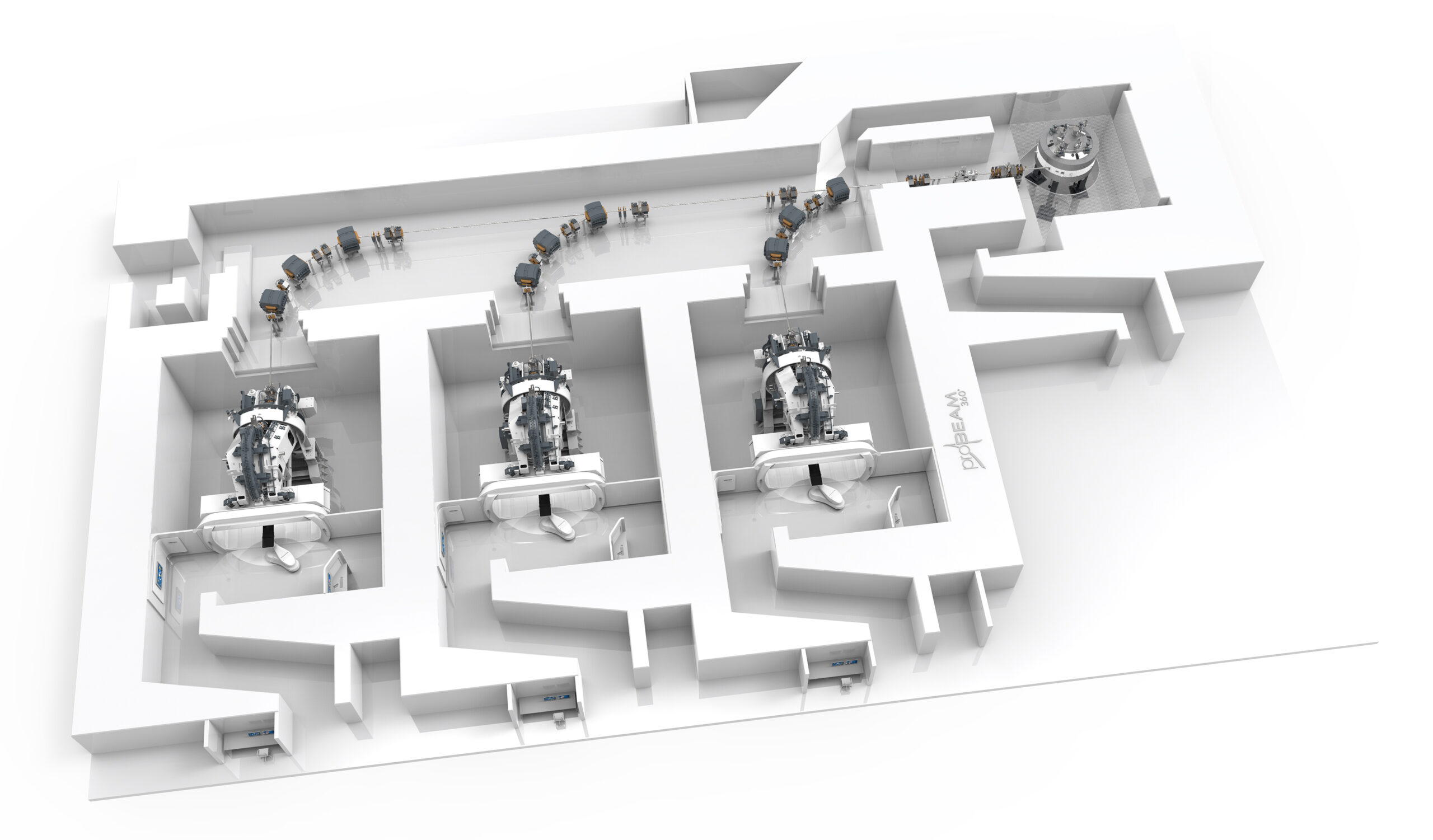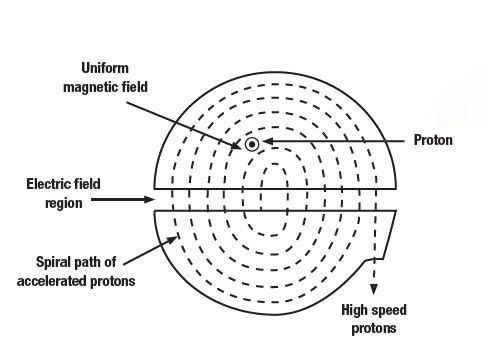Proton Therapy – A New Era of Cancer Therapy for Children
Proton Therapy – A New Era of Cancer Therapy for Children https://pediatricsnationwide.org/wp-content/uploads/2024/04/Proton_Beam-1-1024x683.jpg 1024 683 Abbie Miller Abbie Miller https://pediatricsnationwide.org/wp-content/uploads/2023/05/051023BT016-Abbie-Crop.jpg- April 19, 2024
- Abbie Miller

Proton therapy offers benefits over traditional photon radiation therapy. Using proton therapy, doctors can give more specific, concentrated doses of radiation with less risk and damage to the surrounding tissue.
Proton therapy is an advanced type of radiation treatment that uses protons instead of X-rays to kill cancer cells. Our proton therapy center uses the ProBeam 360°. A cyclotron painlessly delivers a high-energy proton beam through the skin from outside the body. A system of magnets, paired with a highly advanced computer mapping and computed tomography (CT) imaging system, allows doctors to control the beam’s delivery with precision, matching the size and shape of the cancerous tissue.
The protons stop when they reach their target, releasing most of their cancer-fighting energy right to the tumor. They directly target cancerous tissue with extreme precision, while minimizing exposure of nearby healthy tissues. This is particularly important in children and young adults whose tissues are still growing. Sparing healthy tissues minimizes side effects and helps patients maintain a higher quality of life.

Cyclotron: the cyclotron uses electric fields to accelerate hydrogen protons to 66% of the speed of light.
Electromagnets: the magnets focus and route the proton beams from the cyclotron to the gantries.
Gantry: each of these three gantries is three stories tall and weighs 200,000 pounds. They can rotate 360 degrees to precisely target the beam on the area of the body to be treated.
Patient room: The patient room shown above features customizable lighting to aid in patient relaxation. The gantry and bed are both movable to support the treatment of specific areas of the body, minimizing radiation exposure to healthy tissue.
Inside the Cyclotron
The cyclotron painlessly delivers a high-energy proton beam. Protons travel more than 100,000 miles per second and target cancerous tissue with extreme precision.

The Future of Radiation Therapy: FLASH Therapy
FLASH therapy is a new form of proton therapy that is available only in clinical trials. FLASH treatment delivers a high-energy proton beam to cancerous tissue at an ultrahigh dose rate in a single burst in under one second. Patients may only have to undergo one to three sessions.
In preclinical studies, both conventional proton therapy and FLASH reduced the number of needed treatment sessions with no known additional side effects. Traditional radiation therapy based on X-rays, or photons, is commonly delivered in multiple treatment sessions and typically requires six to eight weeks to complete. FLASH therapy could reduce a typical 30-day treatment regimen into a single treatment — delivered in less than one second.
The Proton Therapy Center is the first treatment center specifically built with a dual-capability system that can deliver both conventional proton therapy and FLASH in the United States.
About the author
Abbie (Roth) Miller, MWC, is a passionate communicator of science. As the manager, medical and science content, at Nationwide Children’s Hospital, she shares stories about innovative research and discovery with audiences ranging from parents to preeminent researchers and leaders. Before coming to Nationwide Children’s, Abbie used her communication skills to engage audiences with a wide variety of science topics. She is a Medical Writer Certified®, credentialed by the American Medical Writers Association.
-
Abbie Millerhttps://pediatricsnationwide.org/author/abbie-miller/
-
Abbie Millerhttps://pediatricsnationwide.org/author/abbie-miller/
-
Abbie Millerhttps://pediatricsnationwide.org/author/abbie-miller/
-
Abbie Millerhttps://pediatricsnationwide.org/author/abbie-miller/
- Posted In:
- Uncategorized







